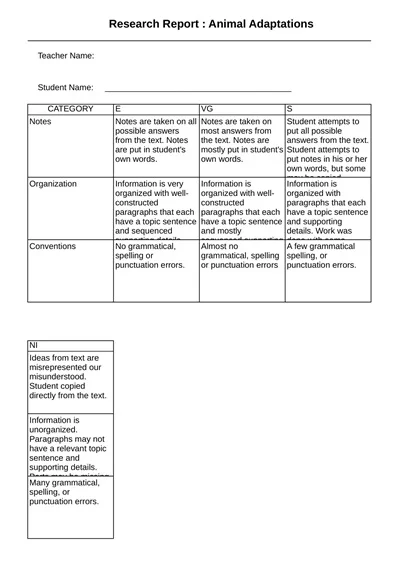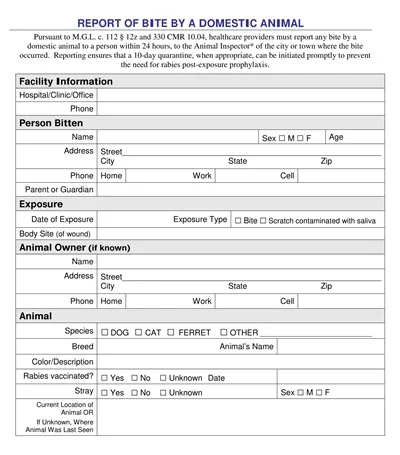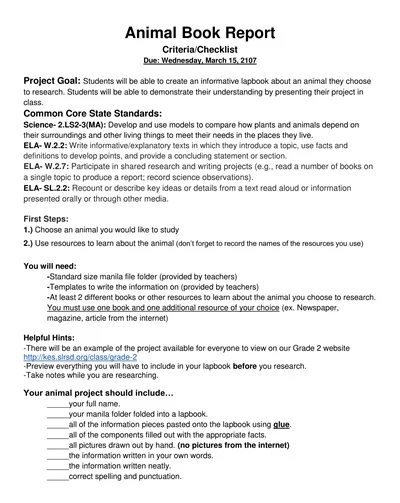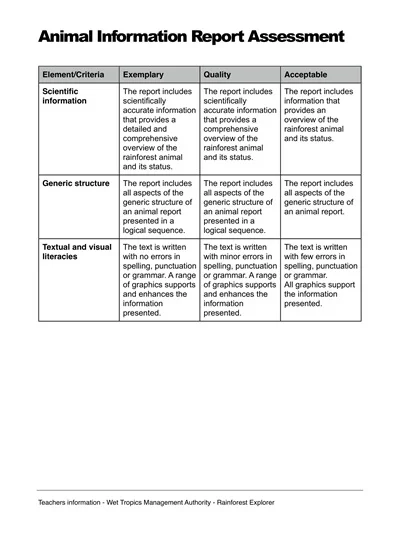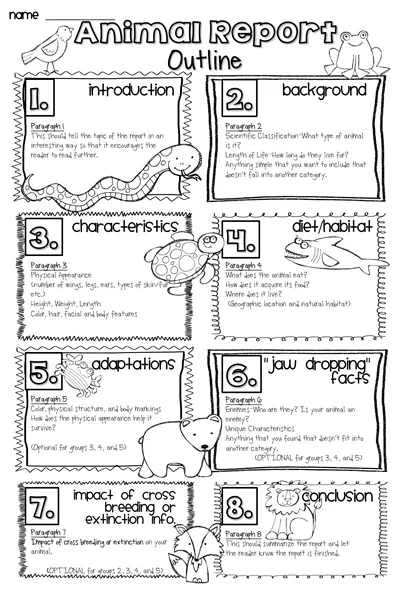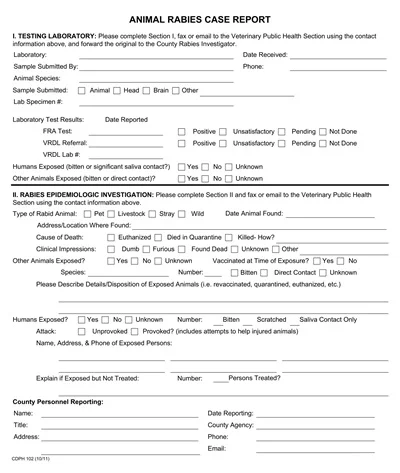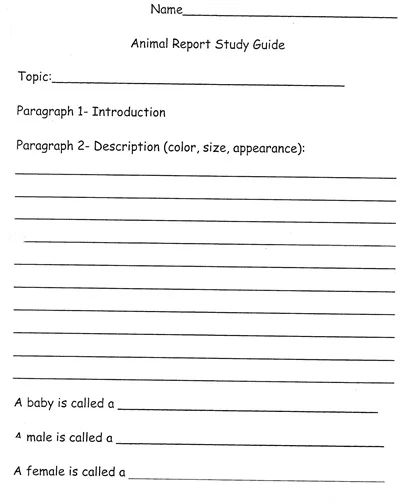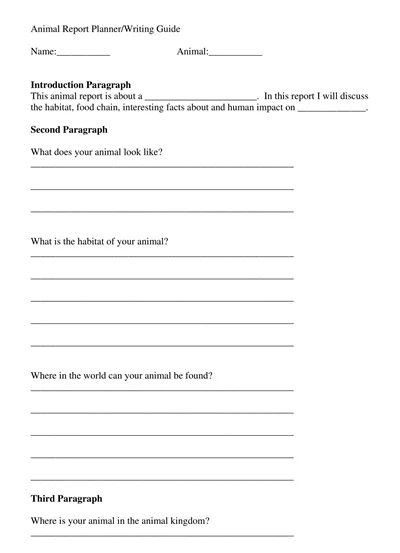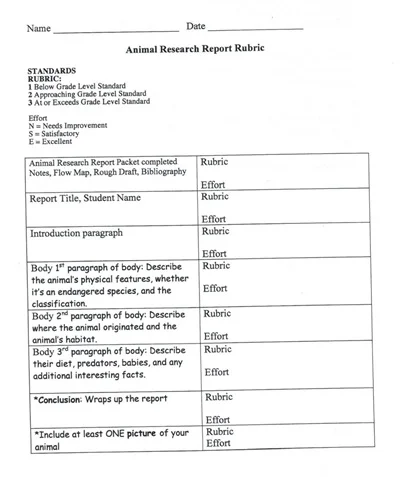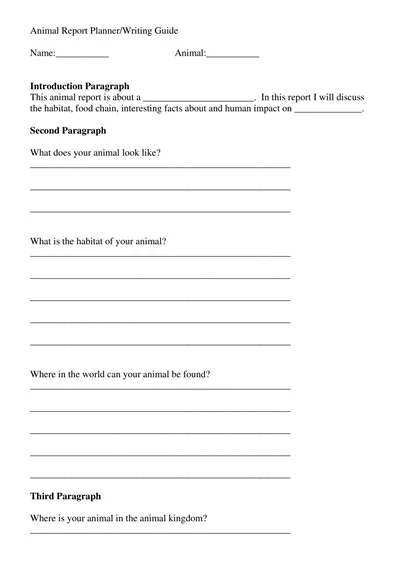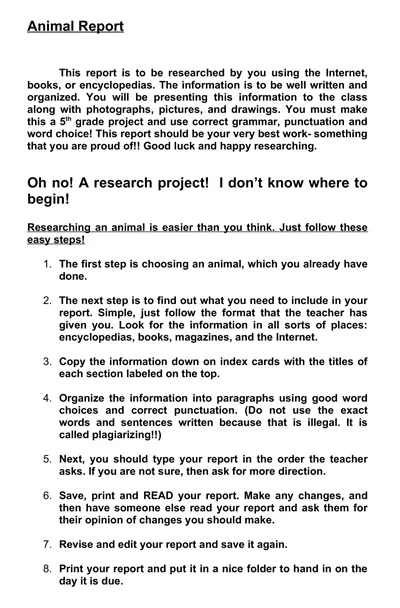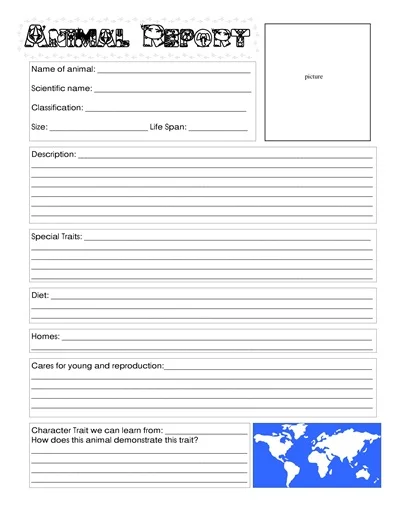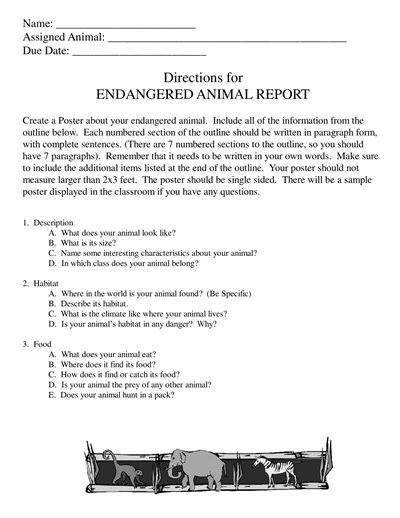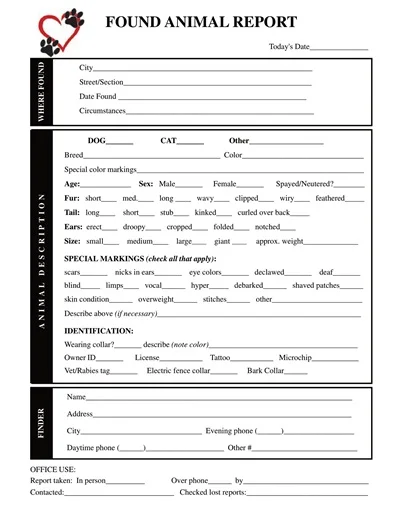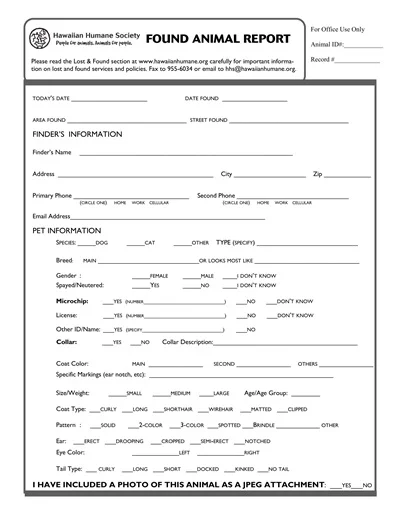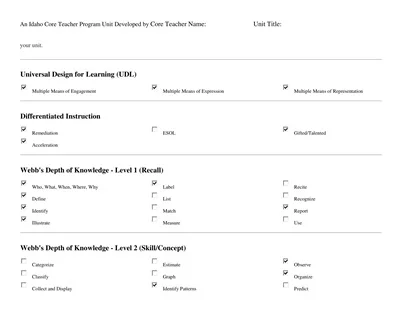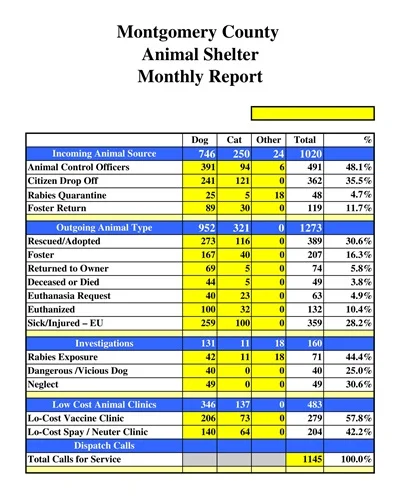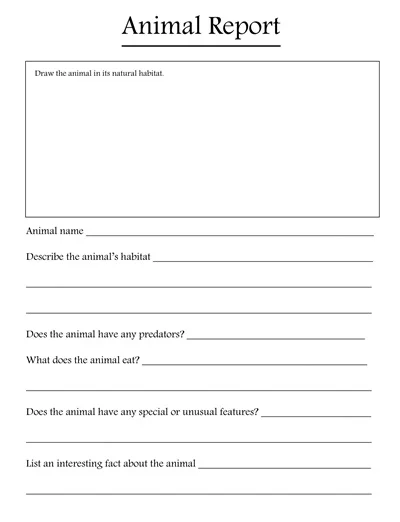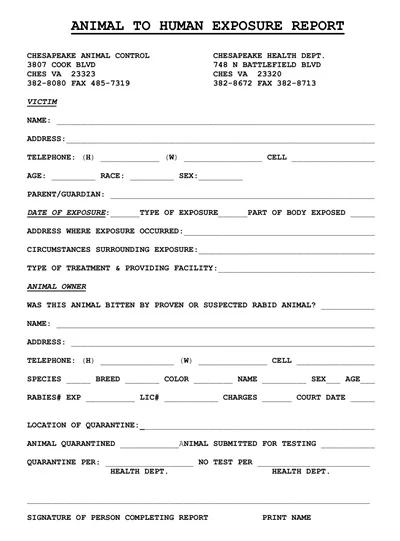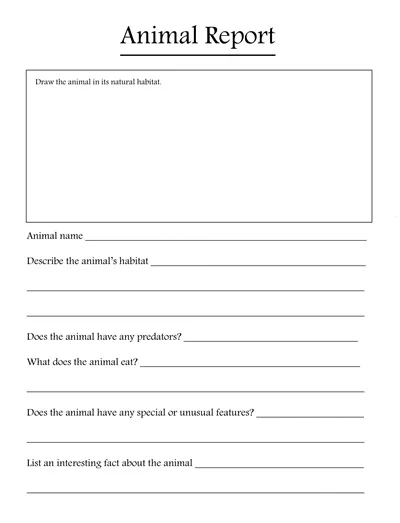32+ Free Animal Report Templates (PDF, WORD)
Animal Report Template is a structured framework designed to facilitate the organized presentation of information and facts about animals. This template usually includes specific sections such as Introduction, Habitat, Diet, Physical Characteristics, Behavior, Conservation Status, and Interesting Facts, among others.
Table of Contents
It serves as a valuable tool in educational settings, aiding students in researching, compiling, and presenting scientific data about various animal species coherently and engagingly.
Download Free Animal Report Templates
What is an Animal Report?
An Animal Report is a detailed and structured document that provides comprehensive information about a specific animal species. It typically includes sections on the animal’s habitat, diet, behavior, physical characteristics, reproduction, and any threats to its survival.
Such reports are often used in educational settings to foster research and learning skills in students, enabling them to organize and present knowledge coherently.
Components of the Animal Reports
An animal report is a comprehensive document that provides detailed information about a particular animal. It includes various components that help in organizing and presenting the information in an organized manner.
Here are the main components of an animal report:
- Introduction: Start with an engaging opening that introduces the animal including its common name, scientific name, and a brief overview of its habitat.
- Physical Characteristics: Detail the animal’s size, weight, fur or skin type, colors, and any unique physical features that set it apart from other species.
- Habitat and Distribution: Describe the animal’s natural habitat, the regions they are found in, and any changes in their distribution patterns due to human activities or environmental changes.
- Diet and Predation: Explain what the animal eats, how it obtains its food, and its position in the food chain. Also, discuss natural predators and defense mechanisms.
- Reproduction and Lifespan: Outline the animal’s reproductive behavior, breeding season, care of young, and average lifespan.
- Behavior and Social Structure: Describe the animal’s daily behavior, social behavior within its species, and interaction with other species.
- Conservation Status: Provide the current conservation status of the animal and explain the factors threatening its survival and efforts being made to protect it.
- Interesting Facts: Conclude with a section of unique and surprising facts that make the animal particularly interesting or noteworthy.
- References: List all sources of information used in compiling the report to allow for further research and verification of facts.
Why Do We Need Animal Reports?
Animal reports are essential tools for understanding and monitoring the diverse species that share our planet. These reports provide valuable insights into the behaviors, habitats, and population dynamics of animals, enabling scientists, conservationists, and policymakers to make informed decisions about wildlife protection and habitat conservation.
By documenting changes in animal populations and health, reports help in assessing the impact of environmental changes and human activities, guiding efforts to maintain ecological balance and preserve biodiversity for future generations.
Tips for Researching and Writing Animal Reports
Animals are fascinating creatures, and writing about them can be a fun and rewarding experience. However, researching and writing an animal report can also be a daunting task, especially for young writers. To help make the process easier and more enjoyable, here are some tips for researching and writing animal reports in Markdown format.
Researching Your Animal
Before you start writing your animal report, it’s important to do some research and gather information about your chosen animal. Here are some tips for effective research:
- Start with reliable sources: When researching your animal, make sure to use reputable sources such as books, articles from respected publications, or educational websites.
- Take notes: As you’re gathering information, be sure to take thorough notes using a note-taking method that works for you. This will help you stay organized and make it easier to reference your sources later.
- Use a variety of sources: Don’t just rely on one source for information about your animal. Try to gather information from multiple sources to get a well-rounded understanding of your animal.
- Look for interesting facts: While researching, be on the lookout for unique or surprising facts about your animal. These can make your report more interesting and engaging for readers.
Writing Your Animal Report
Once you have gathered all the necessary information, it’s time to start writing your animal report in Markdown format. Here are some tips to help you write an informative and well-organized report:
- Start with an introduction: Use the first paragraph of your report to introduce your animal and provide some general information, such as its scientific name and where it can be found.
- Use headings: Organize your report using headings and subheadings to make it easier for readers to follow along. This also helps you stay on track and cover all the important points.
- Include facts and statistics: Back up your information with facts and statistics from your research. This adds credibility to your report and helps readers better understand your animal.
- Use visuals: Include pictures, diagrams, or videos of your animal to make your report more engaging and visually appealing.
- Add your voice: Don’t be afraid to add your thoughts and opinions about the animal in your report. This can make it more personal and interesting for readers.
- Use proper citation: If you use information from other sources, be sure to properly cite them using the appropriate Markdown format for citations. This shows that you have done thorough research and give credit to the source.
How to Use the Animal Report
To make the most out of the Animal Report, follow these detailed steps:
1. Gathering Information
Begin by collecting all necessary data about the animal in question. This includes its scientific name, habitat, diet, behavior, and any conservation status. Use reliable sources such as scientific journals, reputable websites, and expert interviews to ensure accuracy.
2. Structuring Your Report
Organize your report into clear sections to make it easy to follow. A suggested structure might include:
- Introduction: Present the animal, including its common and scientific names, and what will be covered in the report.
- Habitat and Distribution: Describe where the animal lives, the geography, and climate of these areas.
- Diet and Behavior: Explain what the animal eats and its feeding habits, along with key behavioral traits.
- Conservation Status: Discuss any threats the animal faces, such as habitat loss or climate change, and what conservation efforts are in place.
- Interesting Facts: Include any unique or lesser-known facts about the animal to engage your readers.
3. Writing and Review
With your information organized, begin writing your report. Aim for clarity and conciseness, ensuring that your report is accessible to your intended audience. After writing, review your work for accuracy, and coherence, and to check that it flows logically from one section to the next.
4. Including Visuals
Incorporate photographs, maps, or diagrams to complement the text and provide visual interest. Ensure these are appropriately sourced and captioned.
5. Final Steps
Conclude your report with a summary of the key points discussed. Provide references for your sources to allow readers to explore further. Finally, proofread your report or have someone else review it to catch any errors before publication or presentation.
How to Write an Animal Report Template
Creating an animal report can be an enlightening and fun project. To capture the essence of the animal you are studying, follow this template:
- Title Page: Include the name of the animal, an image (if possible), your name, and the date.
- Introduction: Start with a brief overview of the animal, including its common name, scientific name, and where it can be found.
- Physical Characteristics: Describe the animal’s size, weight, color, and any distinctive features that make it unique.
- Habitat and Distribution: Explain where the animal lives. This should include information about its native habitat (forest, desert, ocean, etc.) and the geographical areas it inhabits.
- Diet: Detail what the animal eats, how it finds or hunts its food, and how its diet affects its habitat.
- Behavior and Lifestyle: Describe the animal’s daily life, including its social structure, behaviors for survival (migration, hibernation, etc.), and reproductive habits.
- Conservation Status: Discuss the animal’s conservation status (e.g., endangered, vulnerable, least concern) and the primary threats it faces, such as habitat destruction or poaching.
- Interesting Facts: Include several fascinating facts about the animal that would capture the interest of your audience.
- Conclusion: Summarize the key points made in your report and reflect on what can be done to ensure the animal’s survival and well-being.
- References: List all the sources you used to gather information for your report, including books, websites, and interviews with experts.
This template provides a structured approach to researching and writing about an animal, ensuring you cover all critical aspects of its life and the challenges it faces.

